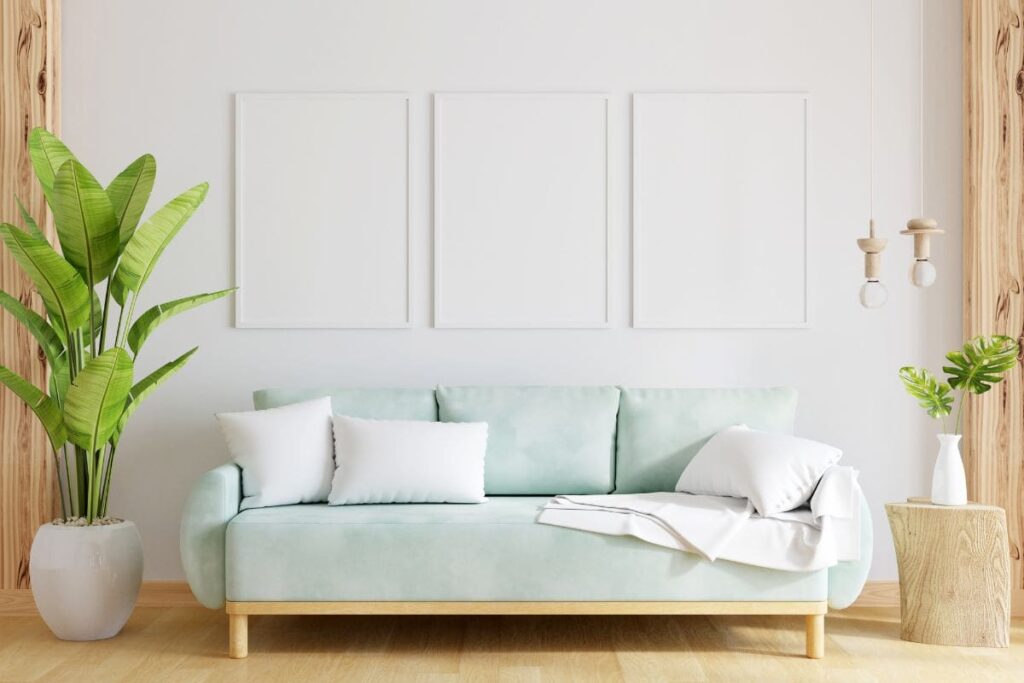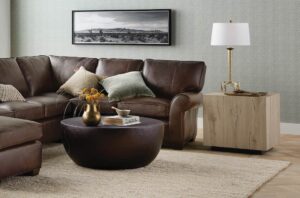The debate between Arhaus vs Pottery Barn is more than just a contest between two popular brands; it’s a critical choice for anyone concerned about the quality and aesthetics of their living spaces. The furniture you select has a significant impact on both the functionality and ambiance of your home.
In this article, we will scrutinize these two brands across various metrics to equip you with the knowledge needed to make an informed decision.
To facilitate a thorough comparison, we will evaluate Arhaus and Pottery Barn based on several specific criteria.
Arhaus vs. Pottery Barn: Quick Comparison Table
| Criteria | Arhaus | Pottery Barn |
|---|---|---|
| Headquarters | Boston Heights, Ohio | San Francisco, California |
| Established | 1986 | 1949 |
| Product Range | Home & outdoor furniture, lighting, bedding | Home & outdoor furniture, decor, bedding |
| Manufacturing Location | Foothills of North Carolina | U.S. (specific locations vary) |
| Sustainability Focus | Yes | Yes |
| Customization Options | Yes | Limited |
| Durability | High-quality materials | Durable hardwood frames |
| Main Materials | Solid wood, upholstery fabrics, metal | Solid hardwood, high-quality upholsteries |
| Unique Features | Modular design, ergonomic design | Classic-inspired designs |
| Target Market | High-end | Wide range of price points |
| Warranty | Lifetime on frames and spring systems | None |
| Customer Feedback | Mostly positive, some concerns about pricing | Positive but concerns about short return windows |
| Promotions & Discounts | Up to 60% off on clearance items | Free shipping over $99, rewards program |
| Delivery Time | Varies | 1-2 weeks for in-stock items |
| Return Policy | Limited warranty | 30-day trial and return |
| Physical Stores | Limited locations | Close to 200 showrooms |
Origins and History
Understanding the background and evolution of both Arhaus vs Pottery Barn provides a clearer picture of what each brand brings to the table. This section delves into the establishment, growth, and milestones of these two furniture giants.
Arhaus’ Establishment and Growth
Arhaus was founded in 1986 with the goal of providing unique, high-quality furniture. The brand has been steadfast in sourcing sustainable and renewable materials, setting it apart from competitors. Over the years, Arhaus has expanded its footprint, now boasting more than 70 stores across the United States.
Note: Arhaus places a strong emphasis on sustainability, often utilizing recycled natural resources in its furniture designs.
Pottery Barn’s Foundation and Expansion
Pottery Barn came into existence in 1950 and has become synonymous with American casual home furnishings. Owned by Williams-Sonoma Inc., the brand has seen substantial growth both in physical stores and online presence. Today, Pottery Barn is a household name, offering a wide range of home furniture and decor items.
Milestones for Each Brand
- Arhaus
- Introduction of custom furniture designs
- Expansion to more than 70 stores
- Launch of an e-commerce platform
- Pottery Barn
- Acquisition by Williams-Sonoma Inc.
- Introduction of Pottery Barn Kids and PBteen
- Expansion into international markets
Market Presence Over the Years
Arhaus and Pottery Barn have both made significant inroads in the American market, but their strategies differ. While Arhaus focuses on boutique-style stores and sustainability, Pottery Barn leans toward mass production and has a broader international reach.
In summary, the history and market presence of these brands reveal their individual strengths and focus areas, offering consumers valuable context for making their furniture choices.
Product Portfolio
A critical factor in choosing between Arhaus and Pottery Barn is their respective product ranges. This section serves as a guide for what types of furniture and accessories each brand offers, as well as their special collections or lines.
Types of Furniture Offered by Arhaus
Arhaus primarily focuses on luxury furniture with an artisanal flair. Their offerings include but are not limited to:
- Living room furniture: Sofas, sectionals, coffee tables
- Bedroom furniture: Beds, nightstands, dressers
- Dining room furniture: Dining tables, chairs, sideboards
- Office furniture: Desks, bookshelves, chairs
Types of Furniture Offered by Pottery Barn
Pottery Barn offers a wide array of furniture that tends to be more traditional and casual, such as:
- Living room furniture: Sofas, armchairs, TV stands
- Bedroom furniture: Bed frames, wardrobes, vanities
- Dining room furniture: Dining sets, barstools, buffets
- Outdoor furniture: Patio sets, lounge chairs, dining tables
Comparison of Accessories and Home Decor
Both brands extend their product lines to home decor and accessories. Arhaus leans more towards artistic and globally inspired pieces, while Pottery Barn offers a variety of options from classic to modern styles.
| Arhaus | Pottery Barn |
|---|---|
| Artistic lamps | Classic table lamps |
| Hand-knotted rugs | Casual rugs |
| Unique vases | Traditional vases |
Note: Pottery Barn also has an extensive range of seasonal decor, which is not as prominent at Arhaus.
Special Collections or Lines
Arhaus often collaborates with artisans to create exclusive lines that emphasize craftsmanship and unique designs. Pottery Barn, on the other hand, frequently offers themed collections that align with seasons or popular trends.
In this section, the product offerings from Arhaus and Pottery Barn have been laid out. This will allow for a clearer understanding of what each brand excels in, thus aiding in making an informed choice.
Quality and Durability
When investing in furniture, considerations about quality and durability naturally take precedence. This section dissects the materials each brand uses, the longevity of their products as per customer feedback, and the warranty terms offered.
Materials Used by Arhaus
Arhaus is known for using high-end, environmentally friendly materials. Their focus is on sustainable and reclaimed wood, organic cotton, and natural latex. Their upholstery often features:
- Top-grain leather
- Organic cotton
- Microfibers
Materials Used by Pottery Barn
Pottery Barn also prioritizes quality but uses a more conventional range of materials. Their product line often includes:
- Kiln-dried hardwood
- Hand-woven wicker
- Performance fabrics
Customer Feedback on Product Longevity
Customer reviews indicate a high level of satisfaction with the longevity of Arhaus products, particularly their wooden and upholstered items. Pottery Barn also fares well in this category, especially with their outdoor furniture. However, some customers have reported wear and tear on soft furnishings over time.
Note: It’s essential to corroborate these reviews with your personal requirements and usage patterns.
Warranty Terms for Both Brands
Warranty policies are crucial for long-term satisfaction. Here’s a quick comparison:
| Brand | Furniture Warranty | Fabric Warranty |
|---|---|---|
| Arhaus | 5 years | 1 year |
| Pottery Barn | 1 year | 1 year |
Arhaus offers a longer warranty period for furniture, reflecting confidence in their products’ longevity. Pottery Barn’s warranty terms are more standard, which may require additional protection plans for peace of mind.
This section has presented vital factors like the quality of materials, customer satisfaction regarding durability, and warranty terms for both Arhaus and Pottery Barn. Such information is crucial for anyone who aims to make an informed decision about their next furniture purchase.
Design Aesthetics
Design aesthetics are integral in differentiating between Arhaus and Pottery Barn. This section will address the unique style elements of each brand’s products, their adaptability in diverse home settings, and any signature designs or technologies that make them stand out.
Style Considerations for Arhaus Products
Arhaus takes a more eclectic approach to design, often mixing vintage and contemporary elements. The brand offers furniture with:
- Artisan-crafted details
- Global influences
- A wide color palette
Style Considerations for Pottery Barn Products
Pottery Barn leans toward a more traditional American aesthetic, featuring:
- Classic lines
- Neutral tones
- Timeless finishes
Flexibility in Home Settings
Both brands offer a degree of flexibility when it comes to fitting into various home styles. Arhaus tends to be more versatile due to its diverse design ethos, while Pottery Barn’s classic designs are easily integrated into traditional settings.
Signature Designs or Patented Technologies
Arhaus has garnered attention for its innovative use of reclaimed and sustainable materials. Pottery Barn, on the other hand, is known for its functional design solutions, such as modular furniture systems and smart technology integration.
Note: When choosing between the two brands, it may be beneficial to consider what unique design features or technologies could enhance your living space.
Thus, while both brands have their merits, the distinction in design aesthetics could be the deciding factor for many consumers. Whether you lean towards the eclectic range of Arhaus or the classic charm of Pottery Barn, understanding their design philosophies can significantly influence your final decision.
Sustainability Practices
Sustainability practices have become a focal point in consumer choices, and both Arhaus or Pottery Barn have made strides in this area. This section provides an overview of the sustainability efforts undertaken by each brand, their relevant certifications and partnerships, as well as how these efforts are perceived by consumers.
Arhaus’ Approach to Sustainability
Arhaus places a strong emphasis on sustainability by:
- Using recycled natural resources for many products
- Employing energy-efficient manufacturing processes
- Offering furniture made from reclaimed wood
Pottery Barn’s Approach to Sustainability
Pottery Barn also prioritizes sustainability but takes a slightly different approach:
- Use of FSC-certified wood in some product lines
- Partnerships with factories committed to fair labor
- Utilization of organic materials in textiles
Certifications and Partnerships
Both brands have sought external validations for their sustainability practices:
| Brand | Certifications | Partnerships |
|---|---|---|
| Arhaus | Greenguard Gold | Rainforest Foundation |
| Pottery Barn | FSC, OEKO-TEX | Fair Trade USA |
Customer Perception of Sustainability Efforts
While Arhaus tends to attract customers who are environmentally conscious due to its strong sustainability marketing, Pottery Barn has been making strides to catch up, particularly among a younger, eco-aware demographic.
Note: Understanding the sustainability efforts of each brand may play a crucial role in your purchasing decision, especially if you are committed to eco-friendly living.
By contrasting the sustainability practices of Arhaus vs Pottery Barn, one gains valuable insights into how each brand is contributing to a more sustainable future. Both brands have their strong points and weaknesses, offering consumers options based on their individual sustainability criteria.
Key Differences Between the Two Brands
While both Arhaus and Pottery Barn offer high-quality furniture and home decor, several distinguishing factors set them apart. These aspects include customization options, price points, target markets, and unique features. Let’s scrutinize these elements for a more informed decision-making process.
Customization Options Available
Arhaus offers a plethora of customization options such as:
- Fabric and material choices
- Modular configurations
- Personalized upholstery
Pottery Barn, on the other hand, has fewer customization options but makes up for it by offering a wider range of pre-designed styles.
Price Point Comparison
Arhaus is often considered a higher-end option with furniture items generally starting at a higher price range. Pottery Barn offers a broader spectrum of prices, catering to both mid-range and upper-range markets.
| Brand | Starting Price for Sofas |
|---|---|
| Arhaus | $2,500 |
| Pottery Barn | $1,200 |
Target Market and Audience
Arhaus aims for a more niche market, targeting customers who prefer customized, high-end furniture. Pottery Barn appeals to a more general audience, offering a range of options for different budget brackets.
Note: Knowing your budget and customization requirements can aid significantly in choosing between these brands.
Unique Features and Selling Points
Arhaus:
- Exclusive artisan collections
- Offers a Furniture Relove program to recycle your old furniture
Pottery Barn:
- Kid and teen lines for family-friendly options
- Collaborative collections with well-known designers
When examining these key differences, one finds that the choice between Arhaus vs Pottery Barn often boils down to personal preferences such as budget, the need for customization, and the target aesthetic one wishes to achieve. Both brands offer compelling reasons to consider them for your next furniture purchase.
Which is Better?
As the quest to furnish one’s home continues, the inevitable question arises: Arhaus or Pottery Barn—which is the better choice? Various factors contribute to this decision, including quality, value for money, and customer reviews. Let’s evaluate these factors to provide some clarity.
Comparative Analysis of Quality
Arhaus is renowned for its craftsmanship and exclusive artisan collections. The furniture is built to last, employing premium materials like solid wood and genuine leather. Pottery Barn also offers quality products but tends to use a mix of both premium and more affordable materials.
| Material Type | Arhaus | Pottery Barn |
|---|---|---|
| Solid Wood | ✔ | ✔ |
| Veneer | ✔ | |
| Leather | ✔ | ✔ |
Evaluation of Value for Money
While Arhaus may have a higher starting price, the long-lasting materials and customization options offer considerable value. Pottery Barn provides a good balance between quality and cost, making it a reasonable choice for those on a tighter budget.
Note: Consider your long-term needs when evaluating the value proposition of each brand.
Consideration of Customer Reviews and Testimonials
A survey of online reviews reveals that Arhaus customers appreciate the luxury and exclusivity the brand offers. Pottery Barn reviews often highlight the brand’s versatility and range of styles.
Final Thoughts and Recommendations
The decision between Arhaus and Pottery Barn will largely depend on what you prioritize. If you desire bespoke, high-end furnishings and are willing to invest accordingly, Arhaus is your go-to option.
For those seeking a balance between cost and quality with a wider array of style choices, Pottery Barn would be more suitable. Both brands have built reputations for delivering quality, so you’ll likely be pleased with your choice, whichever it may be.
Conclusion
In the quest to select between Arhaus vs Pottery Barn, several variables such as quality, value, and customer satisfaction have been discussed.
For potential buyers, the brand choice hinges on factors like budget, customization needs, and aesthetic preferences. In the context of varying needs, Arhaus offers higher-end, bespoke options, whereas Pottery Barn caters to a more versatile and budget-friendly audience.
Lastly, as the furniture market continues to evolve, both brands offer reliable options that adapt to current trends and customer requirements.





